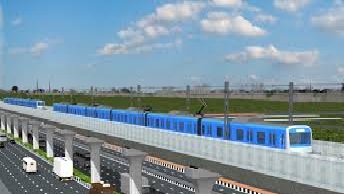The Asian Development Bank (ADB) has agreed to provide a loan of $33.26m for a project to design the Dhaka Mass Rapid Transit (MRT) Line 5 (Southern Route) in Bangladesh.
ADB said that the traffic volume in the Bangladeshi capital city exceeds road capacity by 20% on an average during peak hours and is claimed to exceed more than 100% on particular stretches in central areas, causing economic loss and lowering its livability standards.
The project readiness financing will help to carry out detailed feasibility studies, engineering design and procurement documentation to prepare for the 17.4km line, which will connect Gabtoli and Dasherkandi Stations in Dhaka.
The bank said that measures for climate and natural disaster resilience, and integrate features for women, children, the elderly and people with disabilities will also be included in the project design.
Advanced technology such as automated ticketing and fare collection systems with an integrated database for operations management will also be included in the system.
The Government of Bangladesh will contribute $11.3m for the total cost of the project readiness financing of $44.5m, which is due for completion by the end of 2023.
ADB South Asia principal transport specialist Kanzo Nakai said: “A high quality and high capacity public transport system requires huge financial resources and operational management capacity.
“ADB is one of the development partners responding to government requests for assistance in preparing and operationalizing the crucially important MRT system.”
The actual Line 5 project is estimated to cost nearly $2.5bn and financing for the project will be considered by ADB, the financial institution stated.
Considered to be one of the three high-priority lines in the capital to be completed by 2030, the planned MRT Line 5 is expected to serve as one of the city’s few east-west corridors to offer connections with other MRT and bus rapid transit lines going north-south.
The project construction will include nearly 13km underground with 12 stations, while the remaining section will be elevated with four stations.

